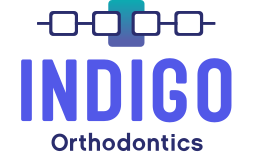When it comes to orthodontic treatment, patients today have more options than ever before. Two of the most popular choices are traditional braces and Invisalign clear aligners. At Indigo Orthodontics, we understand that selecting the right treatment can be overwhelming, and we want to help you make an informed decision. In this blog post, we will compare Invisalign and traditional braces, discussing the pros and cons of each to help you determine the best option for your unique needs.
Invisalign®
Invisalign is a system of custom-made, clear, removable aligners to fit your teeth. They are designed to shift your teeth into their desired position gradually.
Pros
Discreet: Invisalign aligners are made of a clear, medical-grade plastic material, making them virtually invisible when worn. This makes them an attractive option for adults and image-conscious teens.
Removable: Invisalign aligners can be removed for eating, drinking, brushing, and flossing, allowing for easier oral hygiene maintenance during treatment.
Comfort: The smooth plastic material of Invisalign aligners is more comfortable than metal braces, which can sometimes cause irritation to the cheek
Cons
Compliance: Since Invisalign aligners are removable, treatment success depends on the patient’s commitment to wearing them for the recommended 20-22 hours daily.
Limited treatment scope: Invisalign may not be suitable for more complex orthodontic cases or for patients with severe misalignments.
Braces
Traditional braces consist of metal brackets bonded to each tooth and connected by wires, which are periodically tightened to apply gentle pressure and shift teeth into the desired position.
Pros
Effective treatment: Traditional braces have been proven effective in treating many orthodontic issues, including complex cases and severe misalignments.
Customization: Braces can be customized with different colored bands, allowing patients to express their personal style.
Cons
Aesthetics: Metal braces are more noticeable than Invisalign aligners, which may concern some patients.
Oral hygiene: Braces can make it more challenging to maintain good oral hygiene, as food particles can become trapped in the brackets and wires, increasing the risk of cavities and gum disease.
Making your decision
Ultimately, the choice between Invisalign and traditional braces depends on your individual needs, preferences, and orthodontic goals. Here are some factors to consider when making your decision:
- Treatment complexity: Traditional braces may be the better option if you have a more complex orthodontic case or severe misalignments.
- Lifestyle: Removable aligners may be a more suitable choice if you have an active lifestyle or participate in contact sports.
- Aesthetics: If the appearance of your orthodontic treatment is a primary concern, Invisalign aligners offer a more discreet solution.
Both Invisalign and traditional braces have their own unique advantages and drawbacks. Your best choice will depend on your specific orthodontic needs, lifestyle, and personal preferences. At Indigo Orthodontics, we are committed to helping you make the right decision for your individual situation. To learn more and discuss your options with our experienced team, please get in touch with us to schedule a consultation.
References
American Association of Orthodontists. (n.d.). Orthodontic Treatment Options: Invisalign Aligners. Retrieved from https://www.aaoinfo.org/treatment/invisalign-aligners
American Association of Orthodontists. (n.d.). Orthodontic Treatment Options: Traditional Metal Braces. Retrieved from https://aaoinfo.org/treatments/braces/
Read more on our blog!

